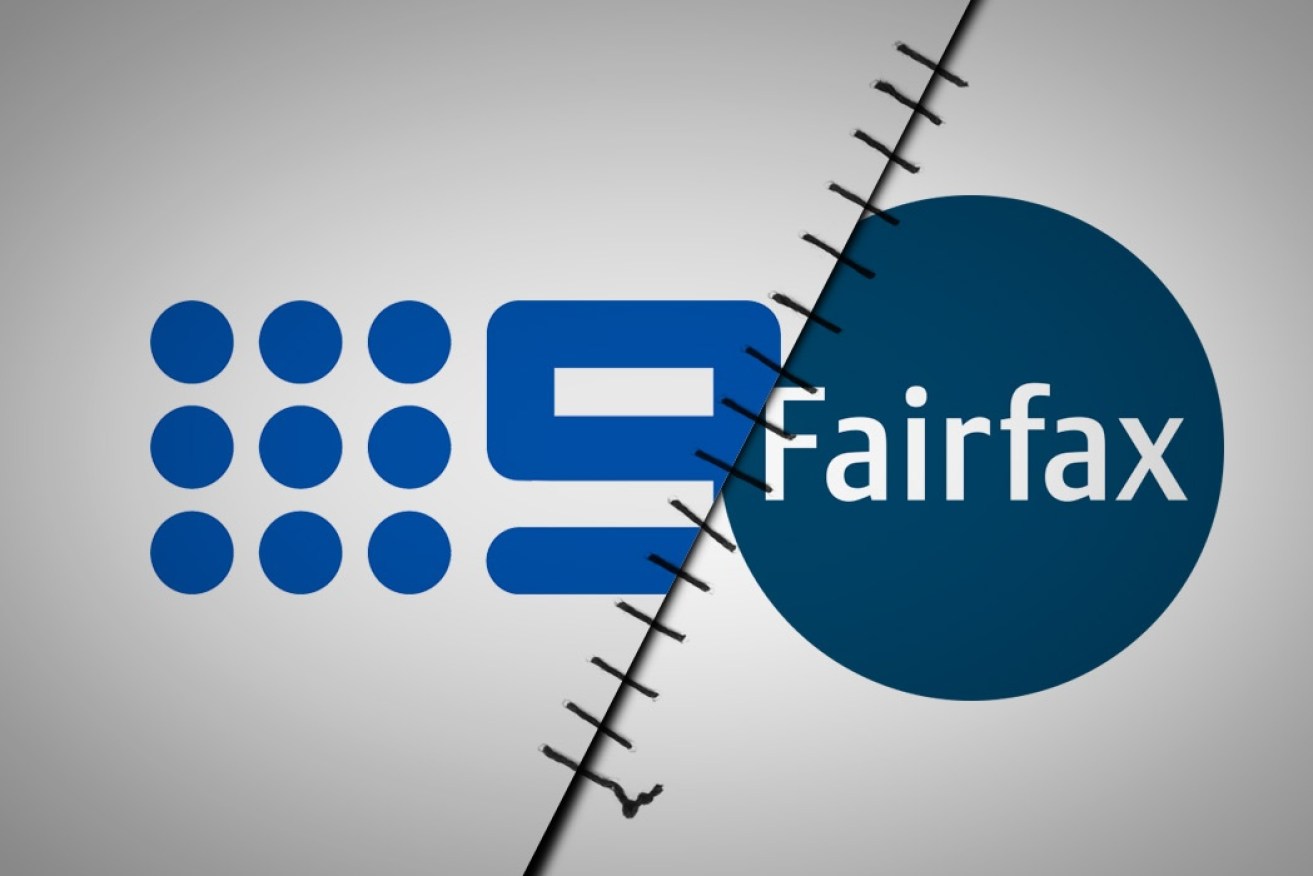Fairfax and Nine: Back to the past and not a synergy in sight


The merger between the media giants was widely tipped to go ahead.
There are two key stories in Nine’s takeover of Fairfax – the business proposition and what the deal will do to Australian journalism. This is about the business bit: it’s a crock.
The reality of merging a primarily-television business and a primarily-newspaper business is that there is little in the way of synergies to capitalise on. One plus one doesn’t add up to any more than a less-focused two.
In any takeover, the proponents try to put the very best spin on the deal – the best Nine can come up with on this one is a claim of $50 million in cost savings somewhere down the track.
That’s $50 million out of a $4 billion enterprise – big whoop. And it’s merely cost savings, more people being sacked, just part of the quest to cut costs faster than revenue retreats.
As is so often the case, the clearest indication of the deal being pathetic is in what is not been said: Nine isn’t game to put dollar value on any claimed revenue growth, what the merger might create as opposed to what it trims. Presumably that is because there is bugger-all, to use a technical term.
Oh, there’s vague talk about the power of offering advertisers a comprehensive multi-media platform – but it’s hollow. Pretending that a Nine salesperson being able to offer a television-and-newspaper ad package is a step forward is so far backward as to be laughable. It makes no difference to the tide of digital and streaming disrupters sweeping away revenue and cutting the price of eyeballs.

Fairfax CEO Greg Hywood will relinquish his position at the company.
This deal is Back To The Past. Before Lady Mary and Young Warwick Fairfax wrecked the joint last century, Fairfax was a “multi-platform” media company with newspapers, magazines, television (Channel Seven) and radio. There was little to be gained from the conglomeration.
I was fortunate to work on the Australian Financial Review during that period, back when the AFR was a great, A-political, well-edited newspaper and, subsequently, for Fairfax’s Macquarie Radio when it was genuine news-breaking commercial alternative to mainstream ABC radio. There were occasional attempts by the various arms to share resources, but they came to extremely little.
I also worked at Channel Nine when it was an arm of the Packer empire. Packer’s magazines promoted Nine’s shows and personalities, the company sold magazine-and-television advertising packages to Toyota et al, but that was it. A little cross-promotion (something that the Fairfax editorial charter should forbid) doesn’t make any difference to the main game.
The core cultures of commercial television (mass entertainment) and newspapers (information for the individual reader) are inherently different. The Fairfax titles are increasingly trying to flick the switch to entertainment, but there’s nothing to be gained by combining ownership. While they’re both in the same ultimate business of packaging eyeballs for sale to advertisers, the way they go about it is different – and successful management of each is foreign to the other.
Back when the Liberal Party was dealing with One Hanson to get its free-for-all media reform to, a Fairfax board member confessed to me the belief that the changes would only buy some time as the price of eyeballs continued to fall and were stolen. All the highly-paid Hywood years had achieved was cutting costs fast enough to stay alive in the rather forlorn hope that “something would come along”.
For a little while, this takeover may trim some costs. (I say “may” because history records most takeovers don’t actually make any money.) There will be only one CEO salary, only one CFO salary, only one pay office, fewer board members etc. No doubt the CEO, CFO and directors will all expect higher salaries and bonuses for running a bigger company, but I’ll let that pass.
Then the push for more cost cutting will resurface as nothing will have fundamentally changed about the two companies punched into one. And that’s when the cost of printing newspapers will be most obvious to the television company owning them.
And here’s the thing about television companies: they are much more beholden to the government of the day. They are licensed by the government and seem to constantly seek favours of one kind or another from government.
Leaving aside that Nine is chaired by a former Liberal Treasurer, still active in giving political advice, a television company without a strong owner has nothing to gain by offending government, especially a government that has shown itself so willing to punish and reward perceived media enemies and friends.
For all the soon-to-depart-with-bonuses Fairfax executives were paid, they ultimately failed to develop a sustainable product people were prepared to buy. The New York Times and Washington Post have done it. Fairfax cut costs and sold out to a TV company.
More than 150 years of publishing sold out for so very little, if anything.








